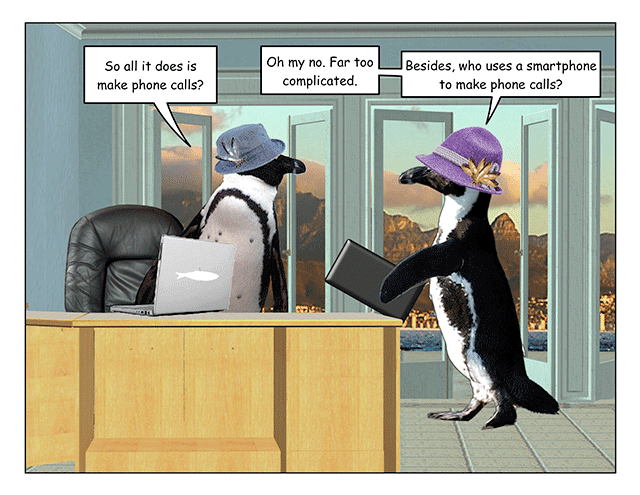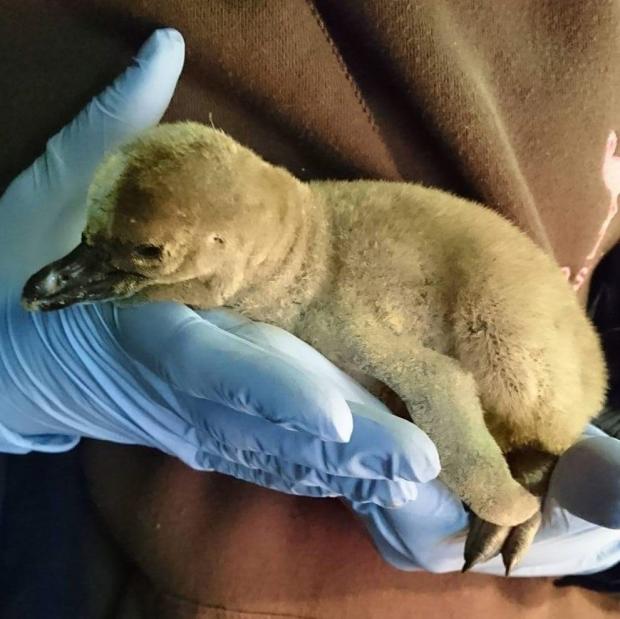London
- Whales have a special day, pangolins too, and every December all
things simian are celebrated, so it seems only right that penguins
should be similarly lauded with World Penguin Day on Monday. The global
observance was launched four years ago when scientists at a US Antarctic
research centre noticed that, without fail, Adelie penguins returned
from the sea to breed on this day every year. It is now used as a means
of promoting their conservation.
My admiration for these aquatic,
flightless birds rose exponentially during an eight-day cruise around
West Antarctica. Like the other 185 passengers on board the Ocean
Endeavour, departing from Argentina's Tierra del Fuego, I wanted to be
wowed by breaching whales, leopard seals' bloodlust, and nature's
borderless paragliders, albatrosses.
Yet penguins are the fabric
of all wildlife-watching voyages to Antarctica. Always waddling around,
they are ready to entertain when whales can't be bothered to surface,
and are all too often an oily lunch for predators in a sub-zero world
that is as chillingly visceral as it is beautiful.
Even in a
landscape as remote as Antarctica, penguins are facing unprecedented
impact from humans, something I'd learn throughout our 1 500
nautical-mile voyage from Dr Tom Hart of Oxford University. This
hitchhiking penguinologist uses Ocean Endeavour to monitor time-lapse
cameras for his Penguin Lifelines project, whose goal is to better
understand the threat to penguins and their fluctuating populations.
The
first thing to admire about these comical creatures is a tenacity to
exist around the Southern Ocean's frozen, wave-battered shorelines. The
region's rigours were introduced to me by a hefty sea swell as we sailed
south from Cape Horn at the tip of South America during a two-day
crossing down the Drake Passage to Antarctica. I lurched around our
reinforced ship like a drunken sailor, lolling between my comfortable
seventh-deck en-suite cabin, lectures on everything from glaciology to
ornithology, the gym, and Polaris Restaurant for Austrian chef Mannfed's
excellent cordon bleu cooking.
Most of the world's 17 penguin
species exist in the circumpolar Antarctic Convergence Zone, where sea
temperatures range from 6ºC to 2ºC and warm sub-Antarctic and cold
Antarctic currents meet, spawning rich, penguin-favoured feeding grounds
of krill (tiny crustaceans). “Penguins don't like cold water, but
they're not stupid. They like the food these waters bring,” lectured
French ornithologist, Fabrice Genevois.
Halfway down the Drake
Passage, it wasn't long before we spotted our first penguins prospecting
for krill, skimming through the water like Wallis' bouncing bombs
trailed by a black-browed albatross.
Soon after, the Antarctic
Peninsula's ice-entombed isthmus was signposted by a floating behemoth
of an iceberg (imagine the White Cliffs of Dover on a world cruise).
Land duly appeared as Ocean Endeavour nosed between Brabant and Envers
Islands near Neko Harbour on the 65th parallel where, on cue, a pod of
humpback whales was gorging on krill.
The combination of blue-hued glaciers and dusky evening light was bewitching.
Planned
daily trips onto land further increased my admiration for penguins.
Even the pong of their fishy guano didn't deter our fleet of Zodiacs
about to storm Neko Harbour, armed with 400mm lenses primed to pap any
penguin that moved. Were the birds bothered? Not a bit.
On snowy
slopes, against the backdrop of a glacier crevassed into teetering ice
towers and wracked by rumbling avalanches, the Gentoo penguins were
presumably preoccupied with survival. These knee-high birds, with a
distinctive white eye-patch, are one of six Antarctic species that breed
on Antarctic land. It was February, nearing summer's end and time was
ticking for the colony's chicks to mature enough to face the onset of
winter. Both parents made food runs while their downy greyish chicks
fussed to be fed. “I've tried the regurgitated krill, it's quite tasty -
a little salty perhaps,” said Genevois. I hoped chef Mannfred didn't
agree. Elsewhere, mature penguins were preening their moulting feathers.
“These
penguins are losers,” commented the ever-phlegmatic Genevois. “They
have time to moult because they didn't breed or lose their chicks.
Dr
Hart, meanwhile, checked a few of his land-and ice-based cameras, in
place to observe the colonies in situ. He explained that his research
suggested this 2 000-pair colony remains stable and reveals that Gentoo
are remaining around the nesting beaches longer into winter than
previously thought. “But this is a late crèche of chicks and quite a few
won't survive the coming winter,” he cautioned.
Next day it was
Chinstraps' turn to get papped. We sailed down the magnificent Lemaire
Channel, whose mountainous flanks of snow and black basalt were
patterned like a Friesian cow's hide.
Chinstrap penguins are a
little smaller than Gentoo, with porcelain-white faces framed by a
delicate black line around their neck. They live beside the Gentoo on a
snowbound promontory, Port Charcot, named by early 20th-century French
expeditionary, Jean-Baptiste Charcot.
Instead of landing, I took a
kayak out for a penguin-eye perspective of their refrigerated world: an
abstract gazpacho of fractured sea ice and bobbing blue-veined bergs,
everevolving into shapes and textures such as scalloped shells, cubes,
Art Deco curves, and floating toadstools, all inextricably dissolving
into seawater as clear as glass.
Chinstraps barrelled past our
kayaks, surfacing frequently for air. As winter's ice locks the
landscape shut, they will head out to sea, fishing exclusively on krill.
They can load up on 800 grams of krill - one-seventh of their body
weight - to carry back to their chicks.
My admiration for their
environment extended to new levels of respect that afternoon. On the
ship's daily menu is a Wandering Albatross and Polar Plunge. The former
is a gin and Cointreau cocktail; the latter a rites-of-passage dip in
the ocean. Joining some of my fellow passengers queuing to take this
unnecessary excursion, I felt like a mutineer about to walk the plank
into the 1.6ºC brine - initial breathlessness, ice-cream headache, then
shock followed in quick succession. The experience lasted barely a
minute and ended with a Ukrainian waiter proffering a welcome shot of
vodka.
Those same hostile waters host fearsome predators where our
admirably brave penguins risk life and flipper every time they fish.
“If this is a leopard seal I want to see him shredding penguins,” said
Gordon, a no-nonsense pipefitter from Medicine Hat, Calgary. Of course,
nobody wanted to see the little chaps getting eaten, but secretly we
hoped they might lure some of Antarctica's mammalian and winged
predators towards our boat, keen to pick up a penguin.
Orcas, for
whom penguins are surely an hors d'oeuvre, offered only distant
sightings. Yet Gordon's lust for penguin gore was sated by magnificent
leopard seals, so named for their spots. One of these big seals
volleyballed an unlucky Gentoo into the air before devouring it.
“Their skin is quite tough, so the leopards have a job biting through,” explained Genevois.
Jostling
for dessert, Antarctica's mightiest winged scavengers, giant southern
petrels, arrived with powerful vulturine beaks to rip into the remaining
carcass, while petite Wilson's storm petrels, nicknamed Jesus Christ
birds because they seemingly walk on water, snaffled morsels of flying
gristle and blubber. Meanwhile, back at the penguin rookeries, predatory
skuas loitered around the chicks to pick off the weakest.
In spite of the natural violence that surrounds them, penguins' biggest adversary is mankind.
Returning
northwards towards Tierra del Fuego after three days on the Antarctic
Peninsula, Ocean Endeavour called at the scenic South Shetland Isles. We
steamed into Deception Island's flooded caldera: its last eruption in
1971 artistically streaked the snowy slopes with cindery, haematite-red
ash. Nearby is Antarctica's largest Chinstrap colony at Baily Head,
where black volcanic beaches are strewn with 50 000 pairs of Chinstraps.
“It's a big colony,” said Dr Hart, “but numbers have fallen by 39
percent since 1986.”
Our onboard lectures muddied any
oversimplified notions I had about anthropogenically induced climate
change. Certainly, dissolving ice sheets are devastating for penguins.
The recently reported Rome-sized Iceberg B09B grounded onto a beach in
Eastern Antarctica and during four years has decimated an Adelie penguin
colony that now has to detour 60 kilometres in search of krill.
But
such ice break-ups may not be down to humans necessarily, cautioned
onboard glaciologist Dr Colin Souness. He explained that the enormous
Larsen Ice Sheet interlocking the Antarctic Peninsula has badly
fragmented over recent decades, yet Eastern Antarctica has been observed
to cool, hinting at the possibility of natural cycles of climate
change.
However, Dr Hart does see direct human activity affecting
penguins. “I'd summarise climate change, fisheries, disease and
pollution, as penguins' biggest threat,” he outlined. “As an educated
guess I'd say the relationship between climate change and krill-fishing
presents the greatest challenge. When krill is over-exploited by
fishing, he explained, it impacts penguins' ability to gather sufficient
food to raise their young. If the ice sheets melt away, fishing can
potentially penetrate deeper into Antarctica. Among other uses, he
explained how krill is used in food colouring for products such as
farmed salmon and Omega 3 oils.
A final disembarkation in the
South Shetlands allowed us the chance to celebrate penguins one last
time. Aitcho Island is fortified by Giant's Causeway-like columnar
basalt, while humpback whales and leopard seals patrol a broad bay of
black sands embedded by beached icebergs offshore.
Mixed colonies
of Gentoo and Chinstraps played the crowd. Tubby, downy chicks huddled
together, generating a fearful din. Others chased downtrodden parents
who plunged into the sea to escape their persistent offspring. I watched
with admiration a brave Gentoo repeatedly chasing away a menacing skua.
Life
for penguins at the bottom of the world is a lot harder than I'd
imagined. These brave little birds deserve celebrating today. I'll
certainly be raising a glass. Something chilled, of course.
source 

















































































